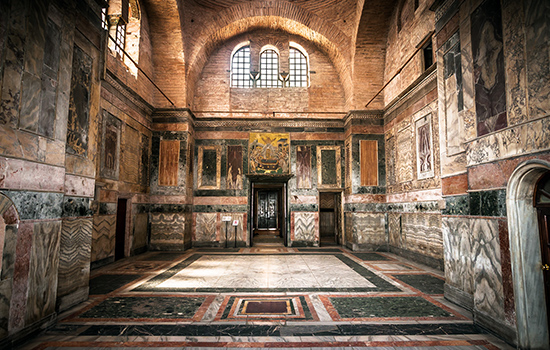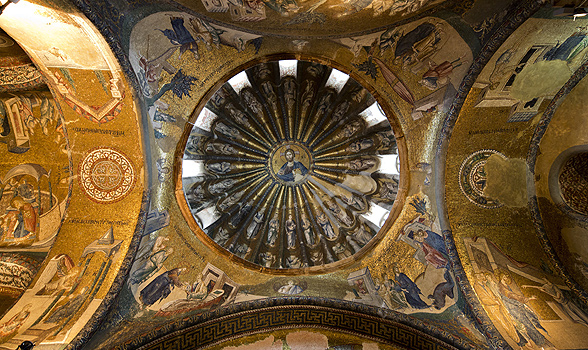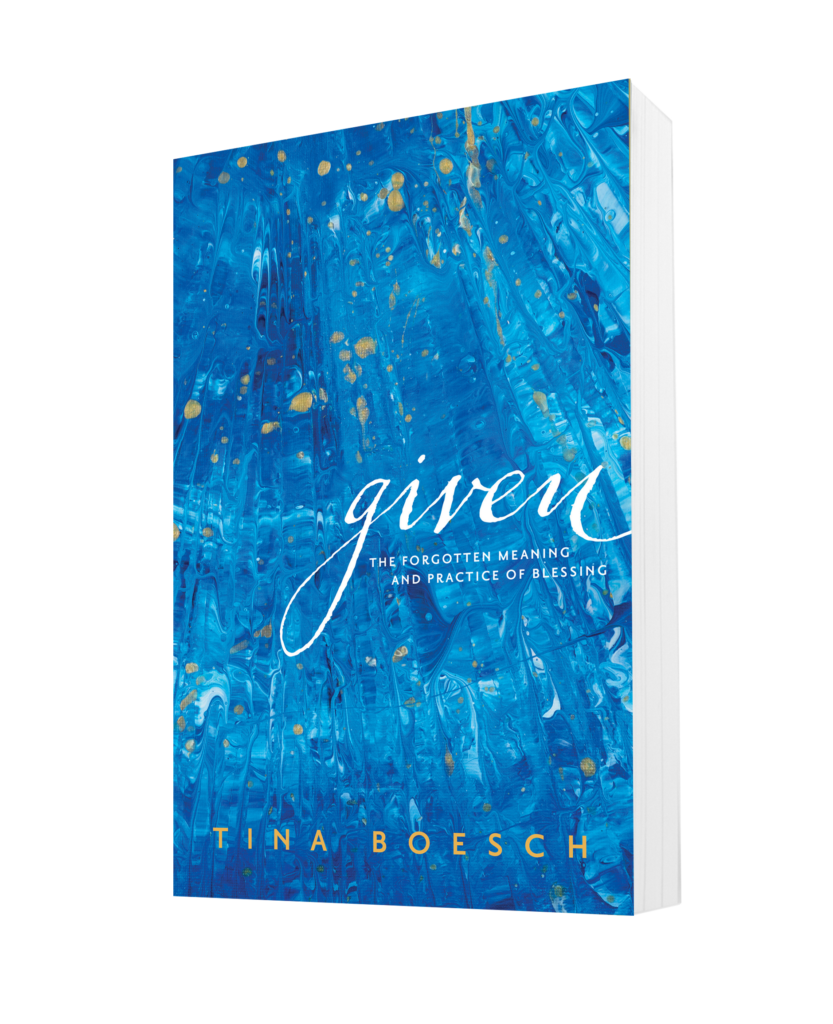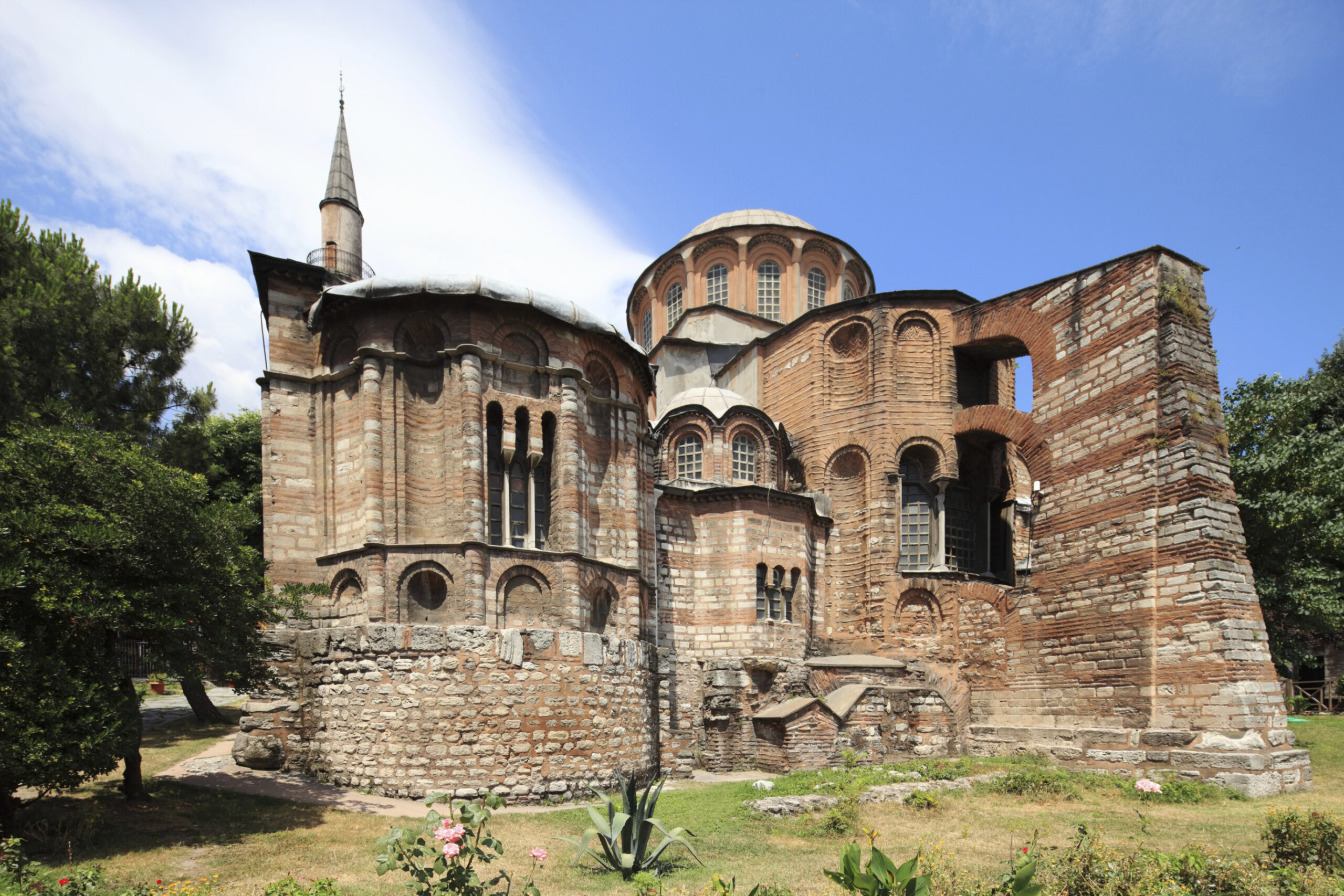On a clear winter day a few years ago, I went with my friend Claire to visit a small chapel near the western edge of the walls that centuries ago protected the city of Constantinople. In the fourth century, the Chora church stood in the open air of a country field, but it’s now lost behind a jumble of apartment buildings. The main doors were closed, so we followed a pathway through a modest garden wrapping around the back of the building. We ducked into the side entrance, stepping out of a twenty-first-century city into a fourteenth-century interior. The walls of the two entry hallways leading to a small chapel were awash with mosaics and paintings illustrating the life of Christ and of his mother, Mary.

Standing inside the massive wooden doors that were once the main entrance, I looked up to see a painting of Mary hovering above me. The blue mantel draped over her head and shoulders flowed down over the doorway. Jesus as a young child appeared within a womb-like mandorla centered within Mary’s body. The image illustrates that Mary is the passageway, gate or door through which God came to live among us. It also depicts the awe-inspiring notion that the uncontainable God was once contained within the body of a woman.
Beside the mosaic of Mary, tiny mosaic tesserae spell out three Greek words. Byzantine artists were careful about identifying figures by name in their artwork. So, I would expect to find the name Mary, or her honorary title, Theotokos, which means God-bearer, associated with the image of her. But not in this church. At Chora, Mary is called the “container of the uncontainable.” This playfully paradoxical name for Mary reflects the reality that Byzantine Christians thought of her as the ultimate symbol of one of the central tenets of Christian orthodoxy: The holy, eternal God took on human flesh and became a man. Incarnation. By definition, it’s not possible for the uncontainable to be contained; and yet, that’s precisely what Christians believe happened within the fragile body of a young woman. In Mary, the impossible became possible because the uncontainable God became contained in the tiniest of spaces, a human embryo that dwelt for nine months in the body of a human woman.
We saw in the first chapter of Genesis that God blessed the natural reproductive cycle with fruitfulness, but God blessed Mary uniquely by supernaturally interrupting the flow of the biological process he designed, planting life inside her in the absence of any human touch. The life within her wasn’t just any life—it was the life of God himself. And it is right here that I begin to understand how Mary was most blessed. She was blessed because God the Son was near to her—within her—in a way he never had been or would be again with anyone in the history of the world.
Faith, like blessing, is oriented toward the future.
Mary’s whole orientation toward God was one of trust. She believed God’s word and allowed it to be accomplished in her life. We know from the hymn Mary sang when she was still young that her vision stretched beyond the immediate present moment. Then she sang, “He [God] has helped his servant Israel, in remembrance of his mercy, as he spoke to our fathers, to Abraham and to his offspring forever” (Luke 1:54-55). Mary was looking all the way back to God’s blessing of Abraham and all the way forward to eternity.

We moved out of the entry hall and into the chapel. There, over the door, I discovered an image of Mary that was new to me but would have been familiar to Orthodox Christians—an image of Mary’s funeral. Her lifeless body rested flat on a slab, the contour of her physical form lost altogether under the stiff, angular folds of her mantel. The disciples congregated around her, mourning her passing. Behind her body, Jesus appeared enveloped in a blaze of light. He stood cradling a baby in his arms.
I wondered about the baby: Who could it be? I asked Claire, who is well-versed in Byzantine iconography, about the meaning of the image. Her answer caught me off guard. She told me that the baby wrapped snug in Christ’s embrace represents Mary’s soul. The baby symbolizes her spiritual body truly alive in the arms of her son.[i]
I have seen countless paintings of Mary holding Jesus as an infant, but in this mosaic, there is a stunning role reversal—Son embraces mother, lifting her soul to a heavenly home. Mary’s body might be spent, but her life is not at an end. Now she will live forever within Christ’s glory. Her son has become her Redeemer.
Mary, it turns out, was blessed because she found life in the son she welcomed into the world.
The philosopher Soren Kierkegaard suggests Mary “has no need of worldly admiration, any more than Abraham has need of tears, for she was not a heroine, and he was not a hero, but both of them became greater than such, not at all because they were exempted from distress and torment and paradox, but they became great through these.”[ii] Mary was most blessed because she emptied herself, allowing God to fill her with faith and stretch her with a blessing that would become the source of salvation and eternal life for the whole world.
Taken from Given: The Forgotten Meaning and Practice of Blessing by Tina Boesch. Copyright © 2019. Used by permission of NavPress. All rights reserved. Represented by Tyndale House Publishers, Inc.

[i] Since first seeing this mosaic with my friend Claire, I’ve read quite a bit about the dormition of the Virgin Mary. A good source for understanding the variations between the three main early Christian traditions regarding the moment when Mary’s body and soul are reunited in paradise, see Shoemaker—Palm traditions, 32–46; Bethlehem traditions, 46–57; Coptic traditions, 58–63. Stephen J. Shoemaker, Ancient Traditions of the Virgin Mary’s Dormition and Assumption (New York: Oxford University Press, 2002).
[ii] Soren Kierkegaard, Fear and Trembling and The Book on Adler, trans. Walter Lowrie (New York: Knopf, 1994), 56. Emphasis added.

